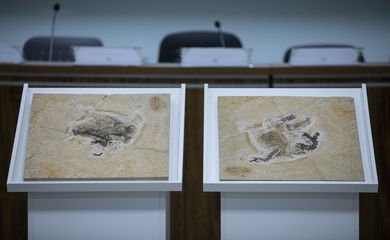Historical book stolen from Pará museum is located in London

The 1823 book Simiarum et vespertilionum brasiliensium species novae (“New Species of Brazilian Monkeys and Bats”), by German zoologist Johann Baptist von Spix, was located in London. The work had been stolen in 2008 from the Emílio Goeldi Museum in Belém, Pará state, and was repatriated Wednesday (May 1) by Brazil’s Federal Police.

According to a statement from the police, the investigation into the theft included international police cooperation and the collaboration of the Arts and Antiquities Unit of the London Metropolitan Police.
The work is part of a Spix’s collection of publications on Brazilian fauna and flora. Three employees of the Emílio Goeldi Museum were charged with embezzlement in 2011 as part of the crackdown.
Other items stolen from the museum were also recovered. In December 2023, Reise in Chile und auf dem Amazonstrome (“A Journey in Chile and on the Amazon River”), by Swiss naturalist Eduard Friedrich Poeppig, was retrieved in Argentina through joint efforts with the neighboring country. In March this year, De Indiae utriusque re naturali et medica (“On the Natural and Medical History of the Indies”), by Dutch author William Piso, was also found in London.
“The repatriation of these works is a milestone for Brazil, as it demonstrates a renewed commitment to the preservation of cultural heritage and sets an essential precedent for the recovery of historical monuments,” the police statement reads.
Spix’s expedition
Born in 1781 in Höchstadt an der Aisch, a territory of the Kingdom of Bavaria between 1805 and 1918, Johann Baptist von Spix entered the Episcopal School in Bamberg at the age of 11 and was transferred to the city’s Episcopal Seminary the following year. By the age of 19, he was already a doctor of philosophy and soon became a renowned philosopher of nature. He also earned a doctorate in medicine in 1807. In 1810, he was hired by the Royal Academy of Sciences to establish a zoological museum in Munich.
Experience and renown played a key role in naming Spix coordinator of the research to be conducted by the entourage of Austrian Archduchess Leopoldina on her trip to Brazil. The mission aimed to integrate the European region of the future wife of Pedro I—crown prince of Brazil—with the Portuguese colony at the time.
It took him three years (1817–1820) to travel from Rio de Janeiro to the Amazonian border with Colombia, covering 10 thousand kilometers through seven states, cataloging 3,381 species of Brazilian animals, documenting indigenous languages, and building collections for studies. Spix also led a team of scientists who produced several other ethnological studies on Brazilian fauna and flora.




